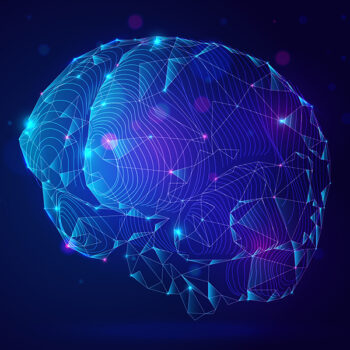Home /

Cognitive Behavioral Therapy (CBT) is widely recognized for its effectiveness in treating mental health conditions like anxiety, depression, and trauma. But its power lies not only in changing thoughts and behaviors—it also brings about real, measurable changes in the brain. By understanding the neurobiology behind CBT, clients and clinicians alike can better appreciate why it works and how it fosters healing.
At the center of this process are three key brain systems: the amygdala, prefrontal cortex, and sensory pathways. The amygdala acts as the brain’s alarm system, detecting threat and triggering the body’s fight-or-flight response. It processes sensory information faster than the prefrontal cortex, the brain’s logical and decision-making center. This is why we often feel before we think—our bodies may react with anxiety, fear, or tension before we consciously register what’s happening. While this is designed to keep us safe, it can become overactive, especially in individuals with trauma or chronic stress.
The prefrontal cortex helps regulate the amygdala by analyzing the situation and deciding whether the threat is real. However, under sustained stress, this system may become less active, reducing our ability to self-regulate and think clearly. Meanwhile, the sensory system continuously feeds environmental input into the brain. In a dysregulated state, even neutral stimuli—like a loud sound or a familiar scent—can trigger an exaggerated threat response, keeping the brain stuck in a cycle of hyperarousal.
CBT helps by retraining these systems. It strengthens the prefrontal cortex’s ability to intervene in reactive patterns by helping clients recognize, challenge, and reframe unhelpful thoughts. Techniques such as thought records, behavioral experiments, and grounding practices enhance awareness and promote intentional responses. In doing so, CBT reduces the amygdala’s reactivity and supports neuroplasticity—the brain’s capacity to form new, healthier neural connections.
Neuroscience research supports this process. Brain imaging studies show that successful CBT is associated with increased activity in the prefrontal cortex and decreased activation in the amygdala. This reflects the core work of CBT: helping individuals shift from automatic, fear-based reactions to calm, reasoned responses.
Understanding this brain-based framework can be especially empowering for clients. It helps them make sense of why they may feel, think, or act the way they do—not as a personal flaw, but as the body’s way of trying to stay safe. CBT offers a structured path to adjust these patterns, restore regulation, and build lasting emotional resilience
Article by: Joseph Folsom, LPC, RPT™, RST











